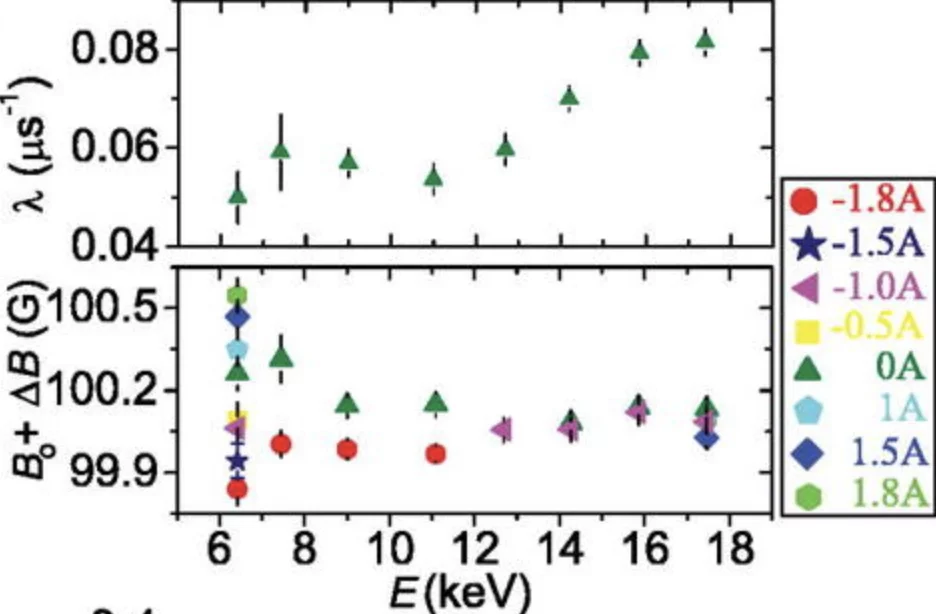We investigated the depth dependence of current-induced magnetic fields in a bilayer of a normal metal (Au) and a ferrimagnetic insulator (Yttrium Iron Garnet—YIG) by using low energy muon spin spectroscopy (LE-μSR). This allows us to explore how these fields vary from the Au surface down to the buried Au|YIG interface, which is relevant to study physics like the spin-Hall effect. We observed a maximum shift of 0.4 G in the internal field of muons at the surface of Au film which is in close agreement with the value expected for Oersted fields. As muons are implanted closer to the Au|YIG interface, the shift is strongly suppressed, which we attribute to the dipolar fields present at the Au|YIG interface. Combining our measurements with modeling, we show that dipolar fields caused by the finite roughness of the Au|YIG interface consistently explain our observations. Our results, therefore, gauge the limits on the spa|ial resolution and the sensitivity of LE-μSR to the roughness of the buried magnetic interfaces, a prerequisite for future studies addressing current induced fields caused by the spin-accumulations due to the spin-Hall effect.
Reference: A. Aqeel et al, Applied Physics Letters 110, 062409 (2017)
Read full article: here


